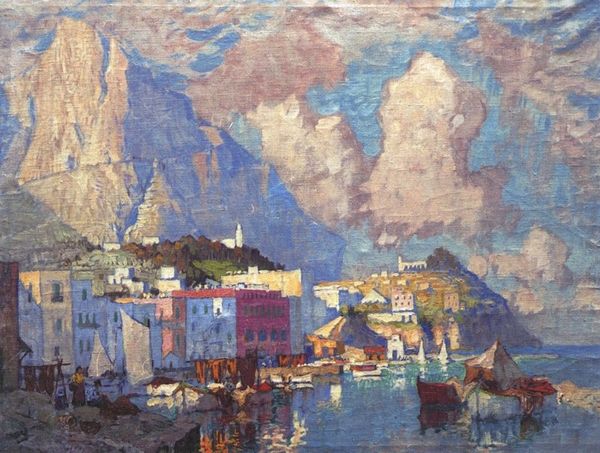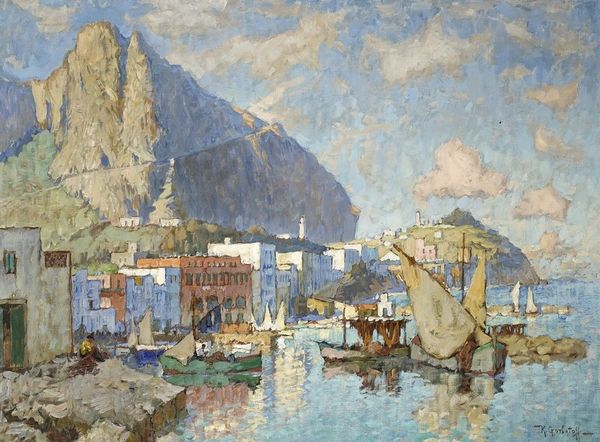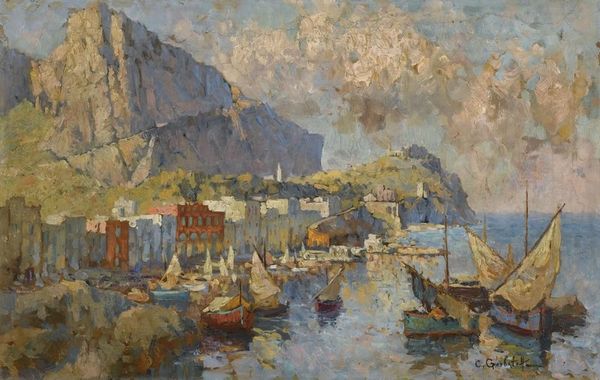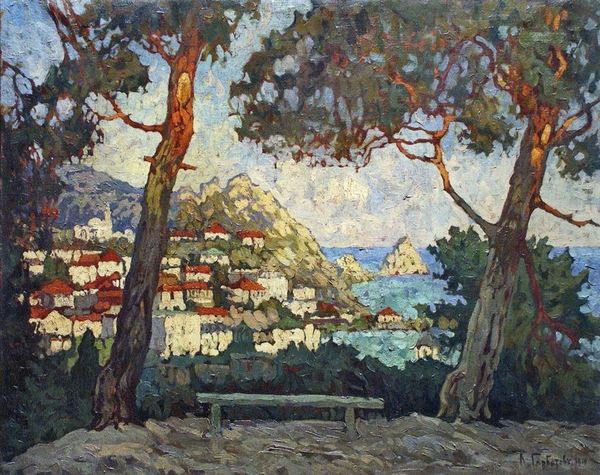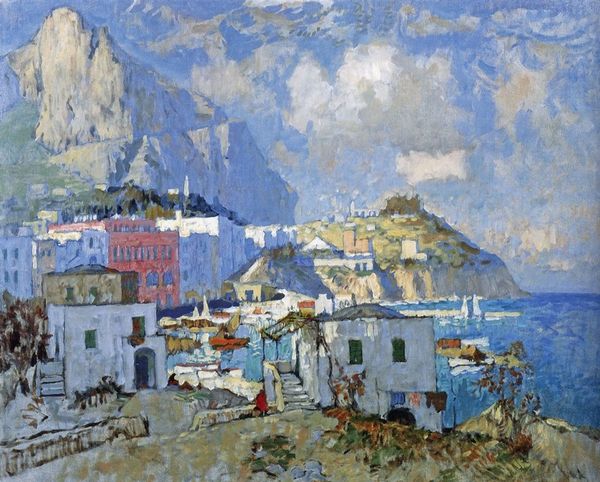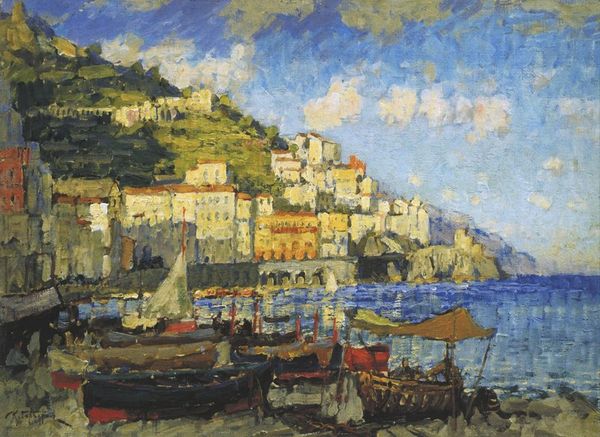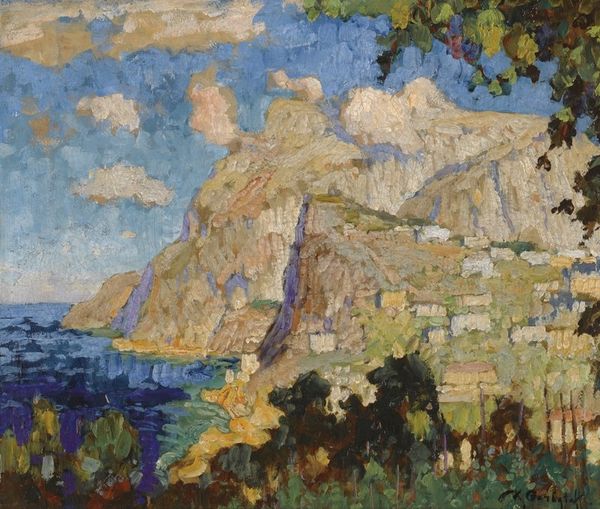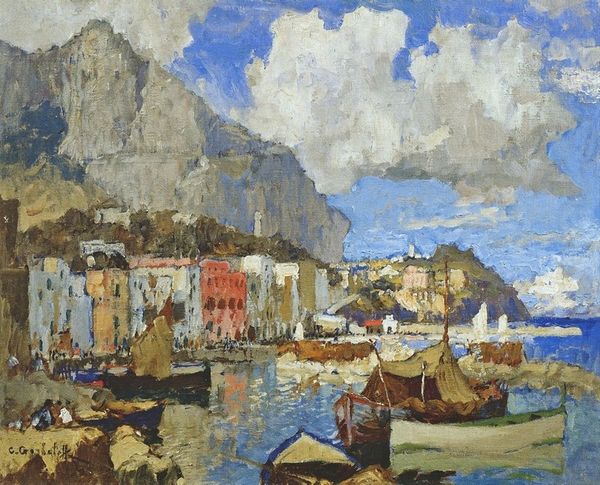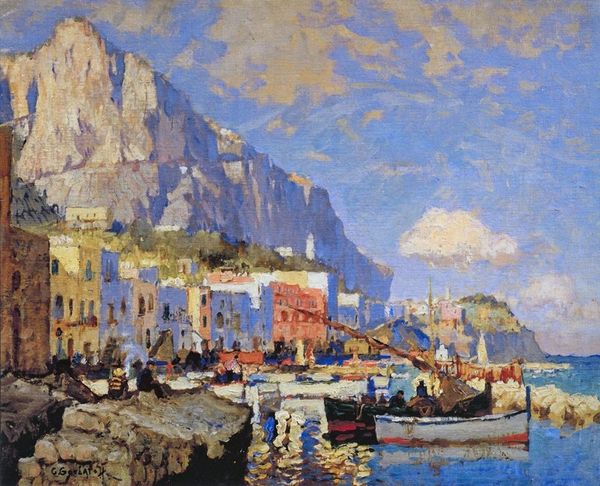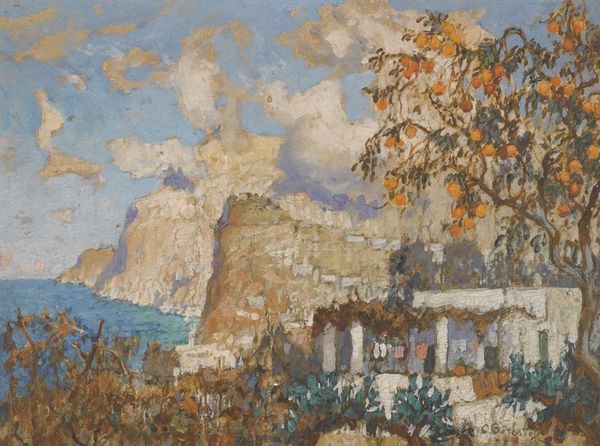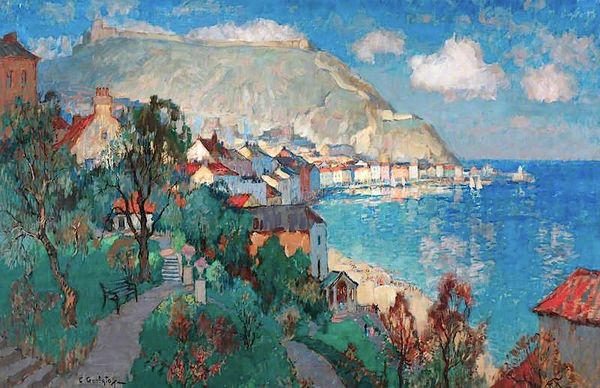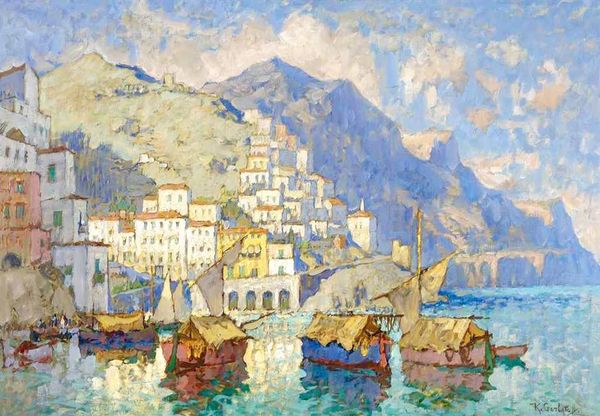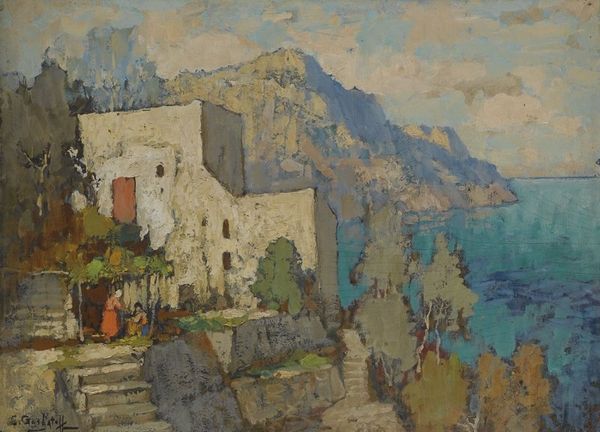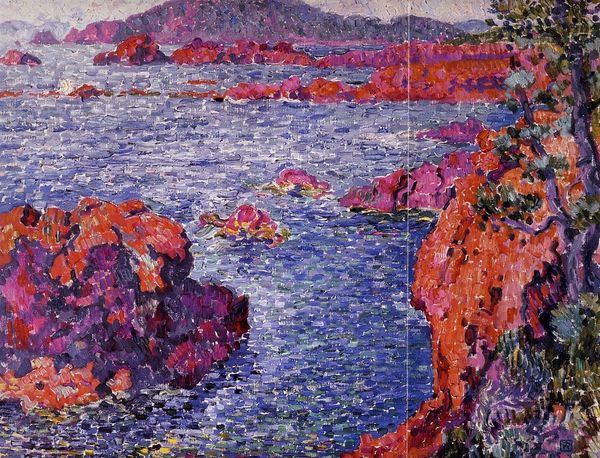
Copyright: Public domain
Editor: So, here we have Konstantin Gorbatov’s “Capri,” painted in 1925, an oil painting with quite the shimmering, bright atmosphere. I’m struck by how he balances the vibrant foreground foliage with the distant cityscape. How do you interpret this work, especially given its historical context? Curator: This piece presents an interesting tension. Gorbatov, as part of the Russian avant-garde, often carried the weight of sociopolitical change within him, yet this work seems to romanticize a landscape far removed from the revolutionary fervor brewing back home. Does this idealized view, rendered in an Impressionistic style, serve as an escapist fantasy, perhaps reflecting the artist's longing for stability amidst turmoil? Editor: That’s a fascinating point. It hadn’t occurred to me that this bright and breezy landscape might be seen as a kind of refuge or response to the intense social changes of the time. Do you think his choice of depicting Capri, a place associated with wealth and leisure, contributes to this interpretation? Curator: Precisely. Consider the implications of depicting leisure and beauty at a moment demanding social realism. Was Gorbatov consciously choosing to portray a world seemingly untouched by the realities faced by many? Or was he subtly critiquing the superficiality of that world through his artistic lens? The use of impressionistic techniques here is also important, allowing for subjective interpretation and emotional response to color. The themes of immigration and travel have always been powerful for artists. Editor: It's really insightful to consider his artistic choices in that context. I hadn't initially connected the painting’s beauty with a potentially deeper, more critical commentary. Curator: And that's precisely why we need to consider how the painting communicates both aesthetic pleasure and, potentially, a more subversive social message. Recognizing this enriches our experience. Editor: I agree completely. I’ll definitely be thinking differently about landscapes now and what it means for an artist to portray the world the way that they do.
Comments
No comments
Be the first to comment and join the conversation on the ultimate creative platform.
